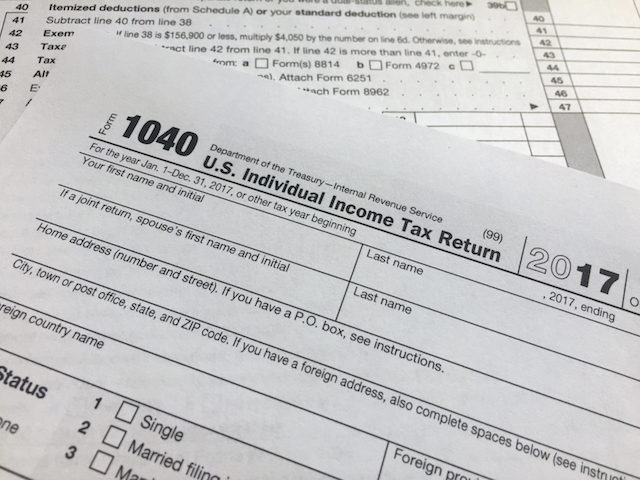On Tax Day 2018, millions of Americans filed their tax returns, looking forward to a much better Tax Day in 2019 due to the Trump Tax Cut. They are already enjoying the smaller federal tax withholdings from their paychecks.
But Tax Day isn’t just about paying federal income taxes. It’s also about paying state income taxes. Despite the relief at the federal level, it remains a day when too many Americans fork over an increasingly large amount of their earnings to their states.
Every year at this time the American Legislative Exchange Council publishes its annual Rich States, Poor States report comparing the tax environment and business climate in all 50 states. At the state level, the differences between the low tax states and the high tax states are extremely stark.
At the good end of the spectrum, there remain nine states that do not impose any income tax at all. They are Alaska, Florida, Nevada, New Hampshire, South Dakota, Tennessee, Texas, Washington, and Wyoming. Almost all are red states.
At the bad end of the spectrum, there are six states that impose income taxes at a top marginal rate of greater than nine percent. They are Minnesota (9.85 percent), New Jersey (9.97 percent), Oregon (10.65 percent), Hawaii (11.00 percent), New York (12.70 percent), and California (13.30 percent). All are blue states.
California’s 13.3 percent is truly punishing. And legislators in Sacramento show little indication that they will end their abuse of taxpayers. It’s having a predictable impact. Taxpayers who can move away are leaving in droves. Census Bureau data shows that, from July 2016 to July 2017, a huge number of California residents left the Golden State for states with lower taxes.
During that 12-month period, California experienced a net loss of just over 138,000 people. Where did they go? Zero income tax states Texas and Nevada saw a net increase of more than 79,000 people and 38,000 people respectively. Arizona (with a low top marginal income tax rate of 4.54 percent) experienced a net increase of more than 63,000 people.
When large numbers of taxpayers leave, that makes the situation even more dire for those left behind. The bloated budgets in states like California are shouldered by a shrinking number of people of who pay taxes. This, in turn, prompts the progressive Democrats who rule such states to react by raising taxes even more.
The Trump Tax Cut puts an additional squeeze on the high-tax states by limiting the deductions taxpayers can take for their payment of state and local income taxes. It’s yet another incentive for taxpayers to depart the Golden State for more favorable tax climes.
The exodus of residents and businesses from California is hard to miss. But what’s often overlooked is similar movement happening among the states in the middle of the tax rankings. When any state significantly increases its taxes, it loses residents and businesses to more taxpayer-friendly states.
Take my state, Kansas. Kansas had relatively low taxes compared to surrounding states in 2012-15, before a coalition of Democrats and liberal Republicans passed record-breaking sales tax and income tax hikes in 2015 and 2017, respectively. During that brief period when taxes were low, more businesses in the Kansas City metropolitan area (which is half in Kansas, half in Missouri) chose to locate in Kansas rather than in Missouri. Kansas saw 23 percent higher job growth than Missouri did. But the tax hikes in 2015 and 2017 subsequently killed Kansas’s advantage.
The result was that Kansas plummeted from 11th place in overall economic outlook in 2013 to 26th place in 2018. (In case you’re wondering, Utah is now #1; and New York is #50.) An out-migration of businesses also began.
Other states have moved in the opposite direction. Most notably, Indiana significantly reduced the income tax burden on its residents and has kept taxes low. In 2013, under then-Governor Mike Pence’s leadership, Indiana cut its flat tax rate on personal income from 3.4 to 3.23 percent. In 2014, Indiana cut its corporate tax rate from 6.5 to 4.9 percent. The lower taxes helped drive an economic expansion that has been better than the national average.
As a consequence, Indiana rose significantly in the state rankings of overall economic outlook. The Hoosier State jumped from 24th place in 2012 to 3rd place in 2018.
The bottom line is that state income tax rates matter – a lot. They can cripple a family’s budget or set it free. State income taxes have an equally important impact on businesses. Because relocating from state to state is a possibility for millions of households and businesses, they often vote with their feet.
State legislators and governors need to recognize that fact and do everything possible to reduce their states’ income tax burdens. If they don’t, they may soon find that they have fewer constituents. And those who remain won’t be pleased.
Kris W. Kobach is the elected secretary of state of Kansas. An expert in immigration law and policy, he coauthored the Arizona SB-1070 immigration law and represented in federal court the ten ICE agents who sued to stop President Obama’s 2012 DACA amnesty. During 2001-03, he was Attorney General John Ashcroft’s chief adviser on immigration law at the Department of Justice. He is also a 2018 candidate for the office of governor of Kansas. His website is kriskobach.com.

COMMENTS
Please let us know if you're having issues with commenting.